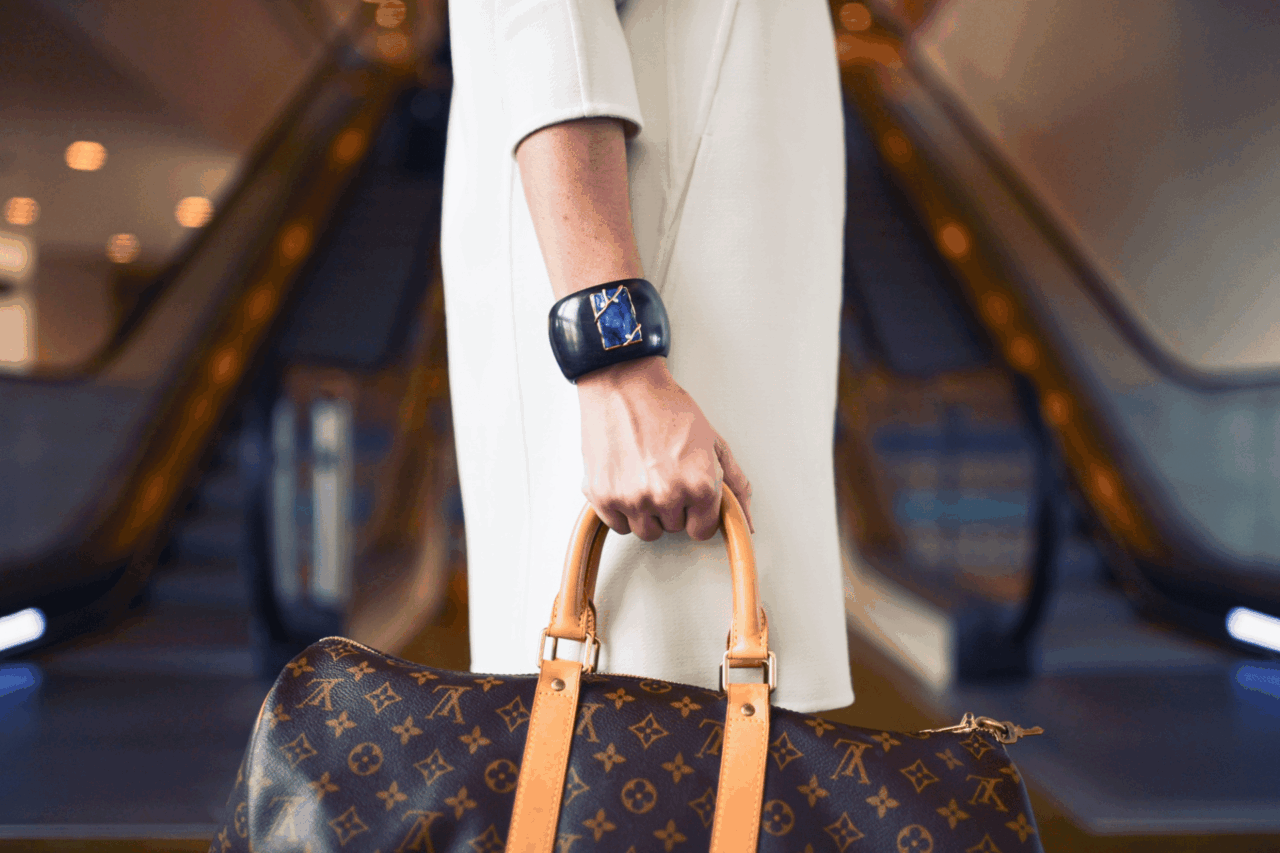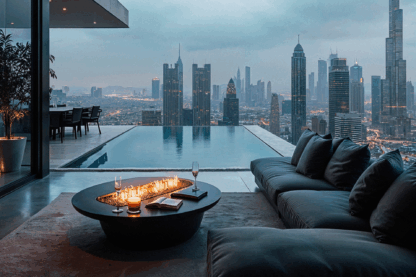Luxury, once defined by exclusivity in fashion, watches, and jewelry, has evolved into an expansive ecosystem that reflects changing consumer values, behaviors, and emotional desires. According to the report “The New Lines of Luxury” published by Frog (Capgemini Invent), the definition of luxury is rapidly shifting, driven by ultra-high-net-worth individuals (UHNWIs) and high-net-worth individuals (HNWIs) across global markets. This comprehensive study surveyed 6,472 affluent consumers across key regions to uncover how expectations and spending behaviors are evolving in today’s dynamic luxury landscape.
Luxury now stretches beyond products; it encompasses financial services, travel, wellness, and lifestyle experiences. The modern luxury consumer, regardless of their geographical location, expects personalization, cultural connection, emotional resonance, and lasting value.
Spending Trends in Emerging Markets and the Rise of Younger Generations
The report draws from a diverse global panel spanning mature, emerging, and high-growth luxury markets. Among the surveyed regions, Europe accounts for the largest share at 29%, followed by the Americas (22.5%), Southeast Asia and Oceania (17.9%), China (15.5%), the Middle East (6.4%), India (4.8%), and Japan (3%). In historically mature luxury markets (such as Europe, North America, and Japan) consumers display more conservative spending habits, a trend often referred to as “luxury fatigue.” These respondents tend to approach luxury purchases more cautiously, allocating a smaller portion of their disposable income to high-end goods and experiences. In contrast, emerging markets, particularly China and India, exhibit a heightened enthusiasm for luxury. Remarkably, up to 10% of respondents in these countries report spending over $1 million per year on luxury, despite having significantly lower average wealth compared to their counterparts in mature markets. This underscores the strong aspirational drive and growth potential in these regions.
Among the 6,472 affluent consumers surveyed in the report, several key insights emerged regarding luxury spending behavior:
- Half of all respondents reported spending over $100,000 annually on luxury goods and experiences.
- 6% of those surveyed indicated they spend more than $1 million per year, with the highest concentration of these top spenders found in emerging markets such as China and India.
- Gen Z, now representing 11% of global wealth, is proving to be an increasingly influential segment, despite holding less total wealth than older generations.
Looking ahead, respondents shared optimistic projections for luxury spending over the next two years across key categories:
- Travel & Hospitality: Average projected spend of $135,000; top 10% expect to spend over $770,000.
- Fashion: Average spend of $85,000; top 10% project spending over $480,000.
- Automobiles: Average spend of $180,000; top 10% anticipate spending upwards of $1.3 million.
These figures highlight not only the scale of luxury consumption among the affluent but also the shifting priorities and the growing influence of younger and emerging market consumers in the luxury space.

Preferred Luxury Categories and Evolving Expectations
As luxury continues to evolve beyond products into lifestyle and emotional value, consumer preferences are shifting accordingly. The frog report highlights that affluent individuals today prioritize experiences over ownership, with a growing desire for everyday enchantment, moments that are meaningful, memorable, and personal.
Among all luxury categories surveyed, Travel & Hospitality stands out as the top choice for high-net-worth individuals across genders, regions, and generations. This strong preference does not always reflect global travel but instead illustrates a broader appreciation for immersive, well-curated experiences, even those close to home.
- In markets like the U.S. and Japan, where passport ownership remains relatively low (approx. 50% and 17% respectively), the trend toward luxury staycations is on the rise.
- Consumers in these regions favor local hospitality experiences that deliver uniqueness and quality without the need for long-distance travel.
- Across all generations, Gen Z values experience most, scoring travel & hospitality eight points higher in preference than other generations.
Beyond travel, several other luxury categories ranked high in preference:
- Automobiles: Especially favored by men and respondents in the Middle East.
- Fashion & Accessories: Maintains strong appeal across all groups.
- Beauty & Wellness: Highly favored by younger generations, particularly Gen Z and Gen Y.
- Jewelry and Watches: Continue to resonate, particularly for those seeking timelessness and tangible value.
While popular, luxury categories show varying levels of customer satisfaction. Overall, 78% of respondents report being satisfied with their experiences; however, differences emerge across various segments. Hard luxury items like watches and jewelry lead to satisfaction, thanks to their perceived value and craftsmanship. In contrast, beauty products (especially popular among younger consumers) receive lower satisfaction scores, highlighting a gap between brand promises and actual delivery. Gen Z reports the lowest satisfaction overall, suggesting many brands still struggle to meet the expectations of this generation.
In terms of emotional brand engagement, the report also reveals which names have achieved iconic status. The Top 15 Most Loved Luxury Brands include:
- Rolex, Chanel, Louis Vuitton, Hermès, Dior, Ferrari, BMW, and Mercedes-Benz, among others.
- These brands excel in storytelling, quality, and cultural symbolism, creating deep emotional bonds with consumers.
However, one paradox stands out: despite travel & hospitality being the most preferred category, no travel or hotel brand made the top 15 list. The highest-ranking hospitality brand, Hilton, only reached 34th place. This reveals a branding gap in the travel sector, while experiences are valued, hospitality brands have not yet earned emotional loyalty at the same level as product-based maisons.
Ultimately, the study identifies several key decision drivers that truly motivate luxury purchases. Across all wealth tiers and generations, the following emerged as the most influential:
- Legacy and long-term value: Products that appreciate over time or can be passed down.
- Exclusivity and personalization: Tailored, rare experiences that feel uniquely made for the buyer.
- Craftsmanship and quality: Attention to detail and authenticity.
- Innovation and creativity: A desire to be among the first to engage with new ideas or trends.
- Cultural authenticity and sustainability: Respect for local traditions, ethical values, and responsible sourcing.
Gen Z is emerging as a powerful force in the luxury market, bringing with them a more neutral, independent approach to consumption. While they share many values with older generations, such as a desire for quality, exclusivity, and innovation, their motivations are still evolving. This generation is less influenced by traditional marketing tactics, signaling a need for brands to rethink how they engage with younger, digitally native consumers. Their behaviors represent a rich opportunity for innovation, as the industry seeks to understand and connect with this influential demographic on a deeper, more authentic level.
At the same time, the luxury industry is undergoing a broader transformation. Today’s affluent consumers are more global, younger, and focused on emotional connection, social responsibility, and intergenerational value. Markets like India, China, and the Middle East are showing rapid growth, while sectors such as travel, fashion, and beauty must adapt to deliver experiences that match their desirability. Ultimately, luxury is no longer just about status; it’s about meaning, impact, and legacy. As the Frog x Capgemini Invent report highlights, brands must move beyond traditional notions of opulence and embrace a more human, values-driven definition of luxury.
To read the full report by Frog, visit https://www.frog.co/designmind/the-new-lines-of-luxury
Stay up to the latest industry luxury news: https://worldluxurychamber.com/insights-news/





